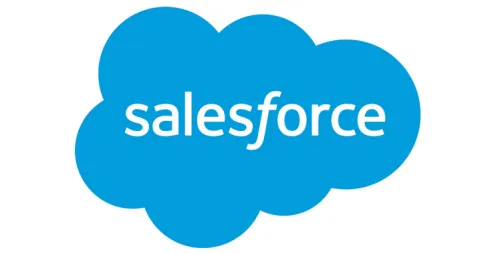7 Great Reasons Why You Should Integrate Your Website and CRM

Article content
Every organisation needs a CRM (C. Relationship Management) system, no matter how large or small that organisation is. Whether the C stands for Customers, Clients, Constituents, Contributors or other Contacts, organisations need to manage their contacts and keep track of their interactions with them.
So you have a CRM, excellent! However, a CRM is only as good as the data it receives. Many organisations fail to integrate their website with their CRM, having never realised the benefits they could receive by doing so. However, integrating the two systems can bring a lot of added value to your organisation. Here are seven reasons why you should integrate your website with your CRM system.
1. instantaneous and access to up-to-date data
For me, the number one benefit you gain from integrating your website with your CRM is having instant access to the latest data. Automated integration between the website and your CRM is seamless and in real time. There's no more questioning the accuracy of the data, or wondering if yesterday's or last week's website orders have been added to the CRM yet. This is hugely beneficial when it comes to talking to a customer as you know, with confidence, all the details of their most recent purchase or other interaction with you, and that can only lead to improved customer satisfaction and increased sales.
2. Reduced administration overhead
If your website and your CRM don't talk to each other, then you're probably spending an inordinate amount of time either exporting it from the website and then importing into the CRM, or worse yet, manually copying and pasting the latest order (or other) data from your website to the CRM, or worst of all, not capturing that data in your CRM at all!
By opting for an automated integration between the two systems, you're reducing your administration overhead (and hence saving both time and money) as all that manual copy and paste, or export and import, is removed. This leads to increased productivity as it frees up your staff to work on other tasks.
3. Single (accurate) data source
Another time saver for staff is where, by integrating your CRM with your website (and other sales or contact point systems), you end up with just one single accurate data source on each contact. Just think, what would having one master record on each customer or potential lead (with no duplicate data) mean for your sales or fundraising team? For a start, it saves them time as they don't have to check multiple systems to get a full picture of the customer.
In addition, because there is no manual human element in adding the data to the CRM, there is less chance or errors being made or duplicate records created. As well as that, it is likely that more data is captured, and by consolidating all that data into one place, a more complete and accurate picture or profile of your customer is achieved, resulting in a higher conversion rate.
4. Better profiling
A key benefit of any CRM is the ability to profile customers or leads to determine what they might purchase, how valuable a customer they are, etc. The more data you have on a customer, the easier it is to create a better profile, and the more accurate the data you feed in, the more accurate the profile becomes.
By integrating your website with your CRM, you will get a fuller, more complete picture of your customers' interactions with your organisation, from initial enquiry to sales, communications and eventual feedback. It gives you access to more reliable and consistent information. You are better informed about your customers and you've better visibility of your customer's behaviour and buying habits.
Better customer profiles allow you to more effectively manage and target marketing campaigns and other activities, while the website integration enables you to track the effectiveness of these campaigns online through conversion rates and customer response.
5. Increased sales
I've touched on it a few times already, but integrating your website with your CRM should help you improve your organisation's sales. Essentially it comes down to one thing - more and accurate data leads to better profiles, which leads to better-quality leads which in turn leads to higher conversion rates.
Many organisations spend a lot of time and money on their websites, creating great content and adding forms for prospective customers to contact them. By integrating your website with your CRM, it shortens the sales process, as potential leads are in the system immediately after the initial contact, and it gives your sales team better data to work with, ultimately leading to better conversion rates.
6. Improved response time to queries
After a potential customer makes contact, for example they've requested a quote or further information about a product or service, your CRM can automatically assign the customer's query directly to the appropriate person or team. For example, the CRM could use the customer's location, industry, referenced product, etc as factors in determining the correct department or staff member to direct the query to. All of the necessary information can be captured via the website and sent to the CRM with the customer's query. The CRM can then automatically assign and alert the relevant staff member of the new message. This all results in a speedier, and more relevant, follow-up response to the customer, which, like a lot of the other benefits listed, leads to increased sales.
7. Customer churn is kept to a minimum
As a result of the improved response time to queries outlined above, lead follow-up is efficient and customers are happy that their query is being dealt with quickly and by the right person. Other small touches such as the automatic sending of an acknowledgement of receipt or a thank you email, can again make the customer feel happy that their query is being dealt with.
Through better profiling of customers, you can track customer satisfaction. Feedback received can be acted upon and dealt with. This is especially important for negative feedback, but just as useful to do for positive feedback. By dealing with a customer's complaints quickly and effectively, and by monitoring and reviewing general satisfaction with different aspects of your business, you can reduce your customer churn rates.
So that all sounds great, now what? Well, I guess first, if you don't have a CRM already, you will need to pick one. There are a lot of CRMs to choose from, including Salesforce, Microsoft Dynamics, SugarCRM, or even Drupal native CRMs such as RedHen and CRM Core. Ultimately though it will come down as to what you're going to use your CRM for and your budget.
If you already have a website and a CRM setup, then the next step is to determine the various interaction points between the website and the CRM. By and large, every form on your website will probably need to integrate with your CRM, though you could ignore some such as comment forms on blog posts. However, integrating your shop checkout, donation form, contact form or other lead generation forms with your CRM is vital.
With the integration points determined, you can then talk to your website developers about your requirements and start making the above seven benefits a reality.
Annertech have lots of experience in integrating Drupal websites with CRMs, including Salesforce, MS Dynamics, SugarCRM, CiviCRM, Goldmine and others. Over the coming months we will publish a series of blog posts on some of the more popular CRMs and how you might approach integrating them with your Drupal website, so stay tuned!
If you have a Drupal website and require CRM integration, be sure to get in touch.



